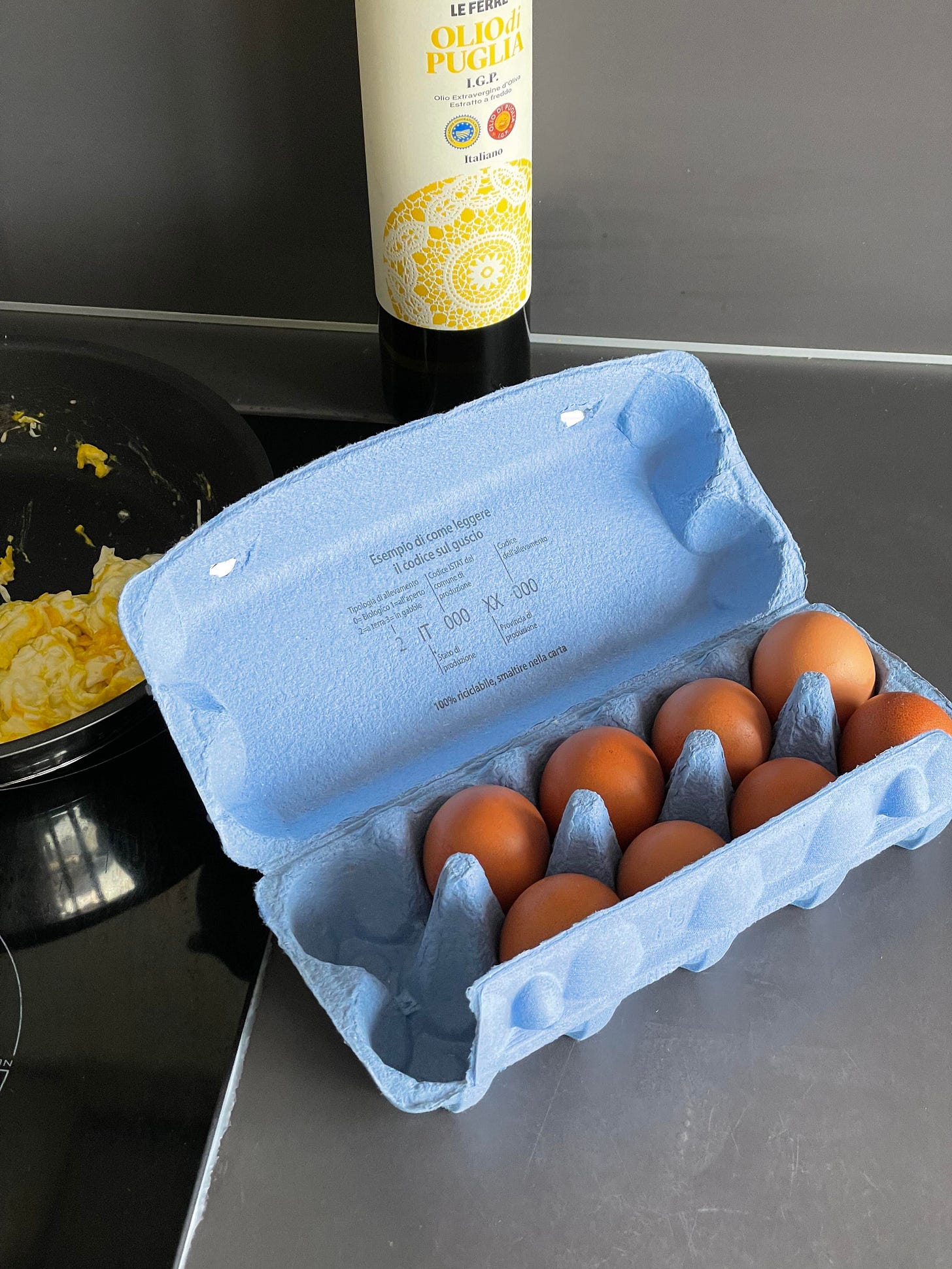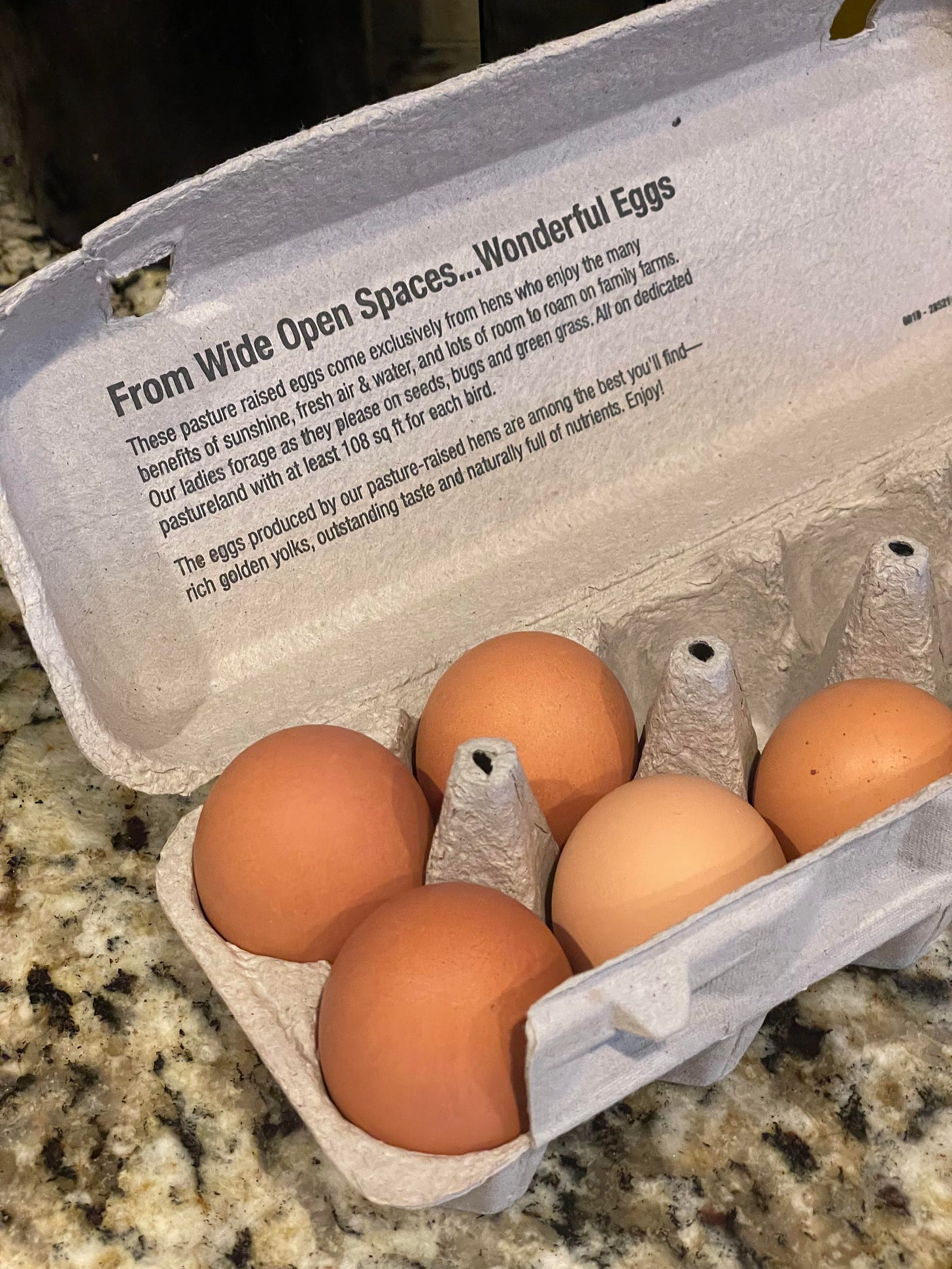Welcome to Matcha & Moi, a newsletter for sharing food stories over a cup of matcha. If you want this to become your newsletter, you can always subscribe for free.
The Playlist: songs for running through green pastures
The Recipe: maple tahini matcha latte
…yep, still in the warm drink mood
For the maple tahini syrup:
1/4 cup of tahini
1/4 cup of maple syrup
2 tbs water
syrup how-to:
Bring all three syrup ingredients above to a light simmer until evenly combined and a syrupy consistency is reached, about 4 min.
Feel free to add more water to adjust the thickness!
For the latte:
1 cup of milk, plant-based or not!
ceremonial matcha, about 1 teaspoon
hot water - not much, only about a cup
latte how-to:
Sift the matcha into a bowl and add about ¼ cup hot water until the powder is just barely submerged.
A note on water temp, it’s best to avoid boiling-hot water in order to prevent scalding the matcha and drawing out any bitterness. If you don’t have a fancy schmancy kettle that lets you set it to the sweet spot of 176F, try boiling your water as you normally would and letting it cool for a few minutes before using.
Using a bamboo chasen, whisk the matcha + hot water in a zig-zag motion.
If you’re not a matcha geek (yet) and don’t have a bamboo whisk lying around, I recommend using a mason jar to just give it a shake! Or a milk frother if you’re slightly more technologically advanced will do. Stay away from those metal balloon whisks - they will do zilch, except leave you with clumpy matcha!
Whisk in the tahini syrup!
Add warm milk (a plus if you have an electric frother or mason jar to use for extra foamy milk!)
Sip and settle in for this week’s story on the egg code 🐣
The Story: Cracking the (Egg) Code
When it comes to cooking the perfect egg, I have a routine. Fry it in ghee for 3 minutes uncovered, then 2 minutes uncovered, with rosemary, aleppo pepper, coarse sea salt, and served sunny side up on a garlic-rubbed slice of toasted sourdough. When it comes to buying eggs, I couldn’t be less picky. My instinct is just to scan for the words “cage-free”, “free-range”, or any other happy-go-lucky phrase on the carton somewhere and to choose the cheapest option. Who really knows the difference anyways?
And then I moved to Italy where the whole egg game changed.
First there’s the taste. I had never been much of a scrambled egg person back in the States, since they always turned out bland, shapeless, and uninspiring whenever I made them. My first morning in Milan, I had 4 eggs to scrape together a breakfast - no toast, no garlic, and no seasonings. At the behest of my grumbly stomach, I decided to just scramble them. Let me tell you how stunned I was by the first bite - it was the creamiest, richest, and freshest bite of scrambled egg I had ever eaten.
What’s even more remarkable is that the eggs I bought weren’t anything special. They were quite literally the cheapest option at Esselunga, an everyday supermarket in Italy. The reason for their superiority can be found right on the eggs themselves.
If you squint a little longer at any egg you buy in the EU, you can find an alphanumeric code stamped onto the shell. This code tells you under what conditions the chickens were raised and the exact farm where the egg was laid. Not only do you know if your eggs came from an organic, free-range, barn, or caged farm, but you also know precisely where they came from.
Here we can admire the rather utilitarian egg carton diagrams showing you how to decode your egg:
Now let’s contrast that to the inside of the Trader Joe’s Pasture-Raised Eggs carton I snapped a pic of back home in the States…
“Our ladies forage as they please on seeds, bugs, and green grass. All on dedicated pasture land with at least 108 sq ft for each bird.”
I don’t know about you, but this just sounds like beautiful fluff, except for the oddly specific “108 sq ft”. Even if it tells us the chickens are pasture-raised, I still know nothing about where my eggs are from! If Italian eggs come with utilitarian diagrams and alphanumeric codes telling me where my eggs came from, how did our eggs in the States end up with some airy marketing phrases?
I tried searching for any industry standards in the US, aka USDA requirements, behind “pasture-raised” egg labeling, but it turns out there are none. Instead, there’s a slew of private and nonprofit organizations offering certifications for pasture-raised eggs in the US. For instance, the Humane Farm Animal Care (HFAC) grants voluntary “Certified Humane® “Pasture Raised” certifications to farms who follow the “1000 birds per 2.5 acres (108 sq. ft. per bird)” rule, and of course those who pay the certification fee.
The only marketing regulation put in place by the USDA exists for two terms: free-range and cage-free. Quoting directly from the official guidelines themselves, we can see that they are far from specific:
Cage Free definition: “laid by hens that are able to roam vertically and horizontally in indoor houses, and have access to fresh food and water”
Free Range definition: the same as cage free but with the addition of “continuous access to the outdoors during their laying cycle”
Source: USDA
There is no industry regulation surrounding bucolic phrases such as “pasture raised”, “happy hens”, or “farm fresh”, so don’t fall for them!
The lack of specificity in the USDA guidelines stands in stark contrast to EU marketing guidelines for both free-range, barn-raised (similar to cage-free), and even caged eggs.
For “free-range eggs” in the EU…
“Hens must have continuous daytime access to open-air runs.
Open-air runs to which hens have access must be mainly covered with vegetation.
The maximum stocking density of open-air runs must not be greater than 2 500 hens per hectare of ground available to the hens.
Open-air runs must not extend beyond a radius of 150 m from the nearest pophole of the building.”
For “barn eggs” in the EU, the guidelines go into even greater detail about the minimum drinking trough and feeder sizes, minimum headroom, types of perches, etc., and can be found here if you’re curious.
The byproducts of stringent EU regulations in the egg industry are consumer transparency, happier chickens, and tastier eggs. If poultry producers in the US can get away with unregulated happy-go-lucky marketing phrases, it’s enough to make us wonder what else they can get away with behind closed doors.
And finally, let’s debunk some egg myths!
Myth: Brown eggs are healthier than white eggs
It’s common for us to assume that brown eggs are “better” than white eggs because they usually cost more and we often associate the color white in food with “bleaching” or unnatural processes. In reality, brown eggs just come from a different chicken breed than white egg-laying hens. The nutritional value is essentially the same. Brown eggs are larger and cost more to produce which is why we see them sold at a slightly higher price than white eggs!
Myth: Eggs have to be refrigerated
In the case of our industrialized food system, this is true. But in the case of the unprocessed world, eggs already have a natural protective coating called the “bloom” which seals in the pores and prohibits bacteria from entering. The reason we have to refrigerate eggs is that many processing facilities will wash and “sterilize” eggs which removes the natural protective coating and requires refrigeration to prevent the bacteria growth. How do we always manage to over-engineer things when nature already has everything figured out?








